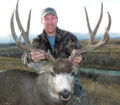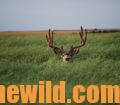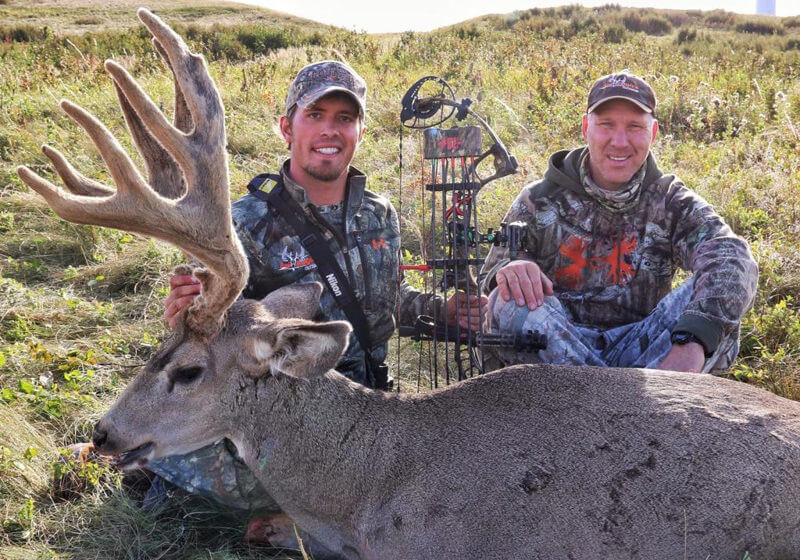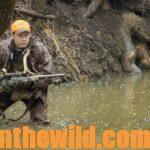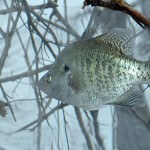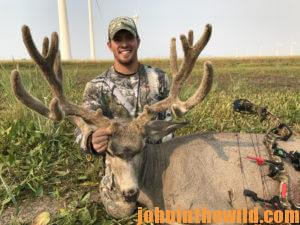 Editor’s Note: Cory Jarvis of Raymond, Alberta, Canada (www.3riversadventures.com, https://www.facebook.com/3riversadventures/), has been hunting mule deer for 30+ years and guiding mule deer hunters for the last 20 years. Mark Drury of Drury Outdoors (www.druryoutdoors.com ) and Eva Shockey are some of his enthusiastic clients.
Editor’s Note: Cory Jarvis of Raymond, Alberta, Canada (www.3riversadventures.com, https://www.facebook.com/3riversadventures/), has been hunting mule deer for 30+ years and guiding mule deer hunters for the last 20 years. Mark Drury of Drury Outdoors (www.druryoutdoors.com ) and Eva Shockey are some of his enthusiastic clients.
During archery season each fall, we do a lot of scouting because the mule-deer bucks are still in their bachelor groups. Although those bucks usually stay in the same general places, they bed in different spots every day, based on wind direction, temperature and other factors that cause them to move from one region to another.
The biggest challenge that we face in guiding archery mule-deer hunters is patience. We have quite a few first-time hunters who just aren’t 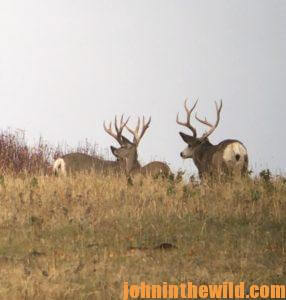 patient enough to make a successful stalk on a mule deer. For instance, we’ll watch some really-nice mule-deer bucks right at daylight when they’re up and feeding. Then when we find the one the hunter wants to go after, we may have to watch him for an hour or two to see where he’ll bed down.
patient enough to make a successful stalk on a mule deer. For instance, we’ll watch some really-nice mule-deer bucks right at daylight when they’re up and feeding. Then when we find the one the hunter wants to go after, we may have to watch him for an hour or two to see where he’ll bed down.
Many times I’ve watched my hunter put on his mechanical release, and I may tell him, “Just relax, we’re not going after that buck just yet. That buck isn’t going to stay bedded-down in that place more than an hour or so, which won’t give us enough time to close the distance and get you close enough for a bow shot. The buck’s too exposed, and the sun will be hitting him in an hour or so, causing him to move.” After we’ve watched that bedded buck for two hours or so, he’ll generally get up and move to his second bed. Then we can go after him.
However, the mule deer bucks don’t always go to their second beds. We’ve learned that if a buck beds close to a road, later in the morning, when the traffic picks up on that road, he’ll get up and move to his second bed. Also, if they’re bedded in an area where I know the sun will hit them in an hour or so, they’ll move again to their second beds. However, every situation is different.
A good percentage of the time, we’ll have what I call a two-step mule deer hunt. We’ll watch the buck while he’s feeding and moving to his first bed. Then we’ll continue to watch that same buck for an hour or two until he gets up and moves to his second bed. So, the hunter and I follow him to the second bed. When the deer gets in his second bed, that’s when we’ll try and put a stalk on him.
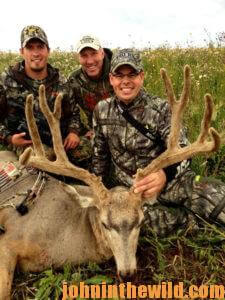 On one hunt, we spotted a really-nice mule deer buck, and he bedded down in a spot where I thought he’d spend the better part of the day. We watched him for two or three hours before we decided to make the stalk. The buck was in cover that was thick enough that I knew he wouldn’t come out for several more hours. We watched the buck from the truck with the air conditioning running, because the weather’s hot up here in September. I told my hunter, “We can sit here in the truck for a couple more hours, or we can go up on the ridge and bake in the sun for a couple of hours before that buck starts to move.” We stayed in the truck and kept glassing the spot where the deer was. About 1-1/2 hours before I thought he would move, we left the truck and went to an overlook where we could see him. In less than an hour, we saw the buck stand-up and start walking. Usually the bucks will move to an agricultural crop or up to a meadow, so you need to try and predict what his route of travel will be and get in front of him.
On one hunt, we spotted a really-nice mule deer buck, and he bedded down in a spot where I thought he’d spend the better part of the day. We watched him for two or three hours before we decided to make the stalk. The buck was in cover that was thick enough that I knew he wouldn’t come out for several more hours. We watched the buck from the truck with the air conditioning running, because the weather’s hot up here in September. I told my hunter, “We can sit here in the truck for a couple more hours, or we can go up on the ridge and bake in the sun for a couple of hours before that buck starts to move.” We stayed in the truck and kept glassing the spot where the deer was. About 1-1/2 hours before I thought he would move, we left the truck and went to an overlook where we could see him. In less than an hour, we saw the buck stand-up and start walking. Usually the bucks will move to an agricultural crop or up to a meadow, so you need to try and predict what his route of travel will be and get in front of him.
But our stalks always are determined by the wind. The wind usually will change directions two or three times during the day. If the wind has switched, so that our scent as we make the stalk will blow toward the buck, we either have to figure another route to get to that buck without him smelling us, or we may have to look for another buck to hunt. Sometimes the bucks will move into heavy cover, where you won’t have an opportunity for a shot, and those hunts are a little tricky too.
One of the most-interesting stalks we had was once when we spotted a bachelor group of nice mule-deer bucks and decided to try to get above them, thinking that they would come out of their beds and go uphill. But instead, when they moved out of their beds, they went downhill, and we didn’t get a shot at them. The next week, when we found that same group of bachelor bucks bedded in the same place, we set-up on the downhill side of where they were bedding, and the bucks got up and walked uphill. Then we moved in behind them. My hunter actually stood in the bed where the buck he wanted 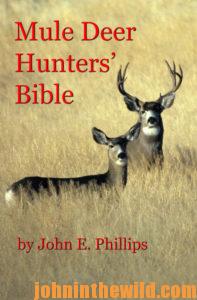 to take had been, saw the buck, took the shot and put the buck down.
to take had been, saw the buck, took the shot and put the buck down.
To learn more about mule deer hunting, check out John E. Phillips’ book – “Mule Deer Hunters’ Bible” available in Kindle, print and Audible at https://amzn.to/2Kg62w5
Tomorrow: Why to Think Like a Predator to Spot and Stalk Canadian Mule Deer

